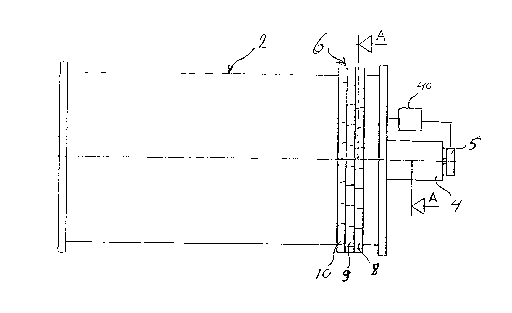Some of the information on this Web page has been provided by external sources. The Government of Canada is not responsible for the accuracy, reliability or currency of the information supplied by external sources. Users wishing to rely upon this information should consult directly with the source of the information. Content provided by external sources is not subject to official languages, privacy and accessibility requirements.
Any discrepancies in the text and image of the Claims and Abstract are due to differing posting times. Text of the Claims and Abstract are posted:
| (12) Patent: | (11) CA 2117946 |
|---|---|
| (54) English Title: | SAFETY MECHANISM |
| (54) French Title: | DISPOSITIF DE SECURITE |
| Status: | Term Expired - Post Grant Beyond Limit |
| (51) International Patent Classification (IPC): |
|
|---|---|
| (72) Inventors : |
|
| (73) Owners : |
|
| (71) Applicants : |
|
| (74) Agent: | G. RONALD BELL & ASSOCIATES |
| (74) Associate agent: | |
| (45) Issued: | 2001-02-20 |
| (22) Filed Date: | 1994-10-12 |
| (41) Open to Public Inspection: | 1995-04-16 |
| Examination requested: | 1997-10-31 |
| Availability of licence: | N/A |
| Dedicated to the Public: | N/A |
| (25) Language of filing: | English |
| Patent Cooperation Treaty (PCT): | No |
|---|
| (30) Application Priority Data: | ||||||
|---|---|---|---|---|---|---|
|
A safety means for preventing a cable drum to rotate with overspeed has parallel ratchet wheels which encircle a brake drum. At a periphery of the ratchet wheels are stopping slots wherein latching means are inserted when an overspeed is detected. The slots of the adjacent ratchet wheels are staggered. Thus the braking effect of each ratchet wheel starts at a different point of time.
Moyen de sécurité permettant d'empêcher un enrouleur de câble de tourner en survitesse, comprenant des roues à crochet parallèles qui encerclent un tambour de frein. Au niveau d'une périphérie des roues à crochet se trouvent des fentes d'arrêt dans lesquelles des moyens de verrouillage sont insérés lorsqu'une survitesse est détectée. Les fentes des roues à crochet adjacentes sont en quinconces. Ainsi, l'effet de freinage de chaque roue à crochet commence à un point différent dans le temps.
Note: Claims are shown in the official language in which they were submitted.
Note: Descriptions are shown in the official language in which they were submitted.

2024-08-01:As part of the Next Generation Patents (NGP) transition, the Canadian Patents Database (CPD) now contains a more detailed Event History, which replicates the Event Log of our new back-office solution.
Please note that "Inactive:" events refers to events no longer in use in our new back-office solution.
For a clearer understanding of the status of the application/patent presented on this page, the site Disclaimer , as well as the definitions for Patent , Event History , Maintenance Fee and Payment History should be consulted.
| Description | Date |
|---|---|
| Inactive: Expired (new Act pat) | 2014-10-12 |
| Inactive: Office letter | 2010-02-26 |
| Inactive: Office letter | 2010-02-24 |
| Inactive: Reversal of will be deemed expired status | 2009-12-04 |
| Inactive: Payment - Insufficient fee | 2009-12-04 |
| Letter Sent | 2009-10-13 |
| Inactive: IPC from MCD | 2006-03-11 |
| Inactive: IPC from MCD | 2006-03-11 |
| Grant by Issuance | 2001-02-20 |
| Inactive: Cover page published | 2001-02-19 |
| Pre-grant | 2000-11-29 |
| Inactive: Final fee received | 2000-11-29 |
| Notice of Allowance is Issued | 2000-06-07 |
| Letter Sent | 2000-06-07 |
| Notice of Allowance is Issued | 2000-06-07 |
| Inactive: Approved for allowance (AFA) | 2000-05-18 |
| Inactive: Application prosecuted on TS as of Log entry date | 1998-02-06 |
| Inactive: RFE acknowledged - Prior art enquiry | 1998-02-06 |
| Inactive: Status info is complete as of Log entry date | 1998-02-06 |
| All Requirements for Examination Determined Compliant | 1997-10-31 |
| Request for Examination Requirements Determined Compliant | 1997-10-31 |
| Application Published (Open to Public Inspection) | 1995-04-16 |
There is no abandonment history.
The last payment was received on 2000-09-14
Note : If the full payment has not been received on or before the date indicated, a further fee may be required which may be one of the following
Patent fees are adjusted on the 1st of January every year. The amounts above are the current amounts if received by December 31 of the current year.
Please refer to the CIPO
Patent Fees
web page to see all current fee amounts.
Note: Records showing the ownership history in alphabetical order.
| Current Owners on Record |
|---|
| KCI KONECRANES INTERNATIONAL CORPORATION |
| Past Owners on Record |
|---|
| OLAVI JUSSILA |